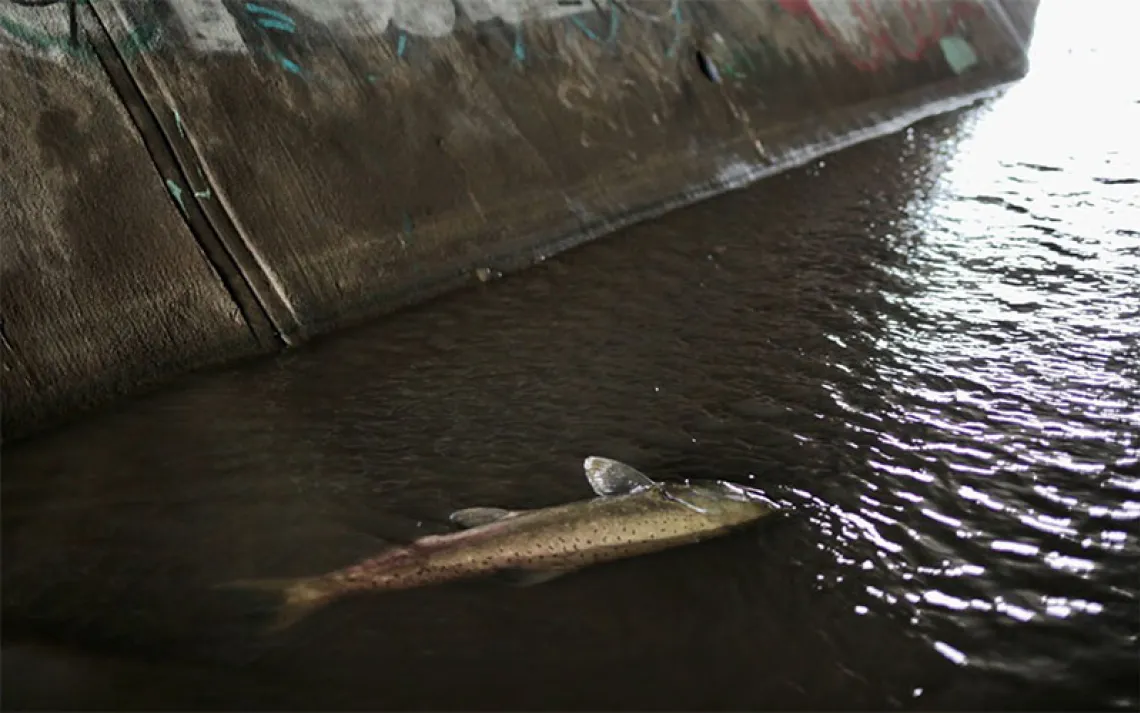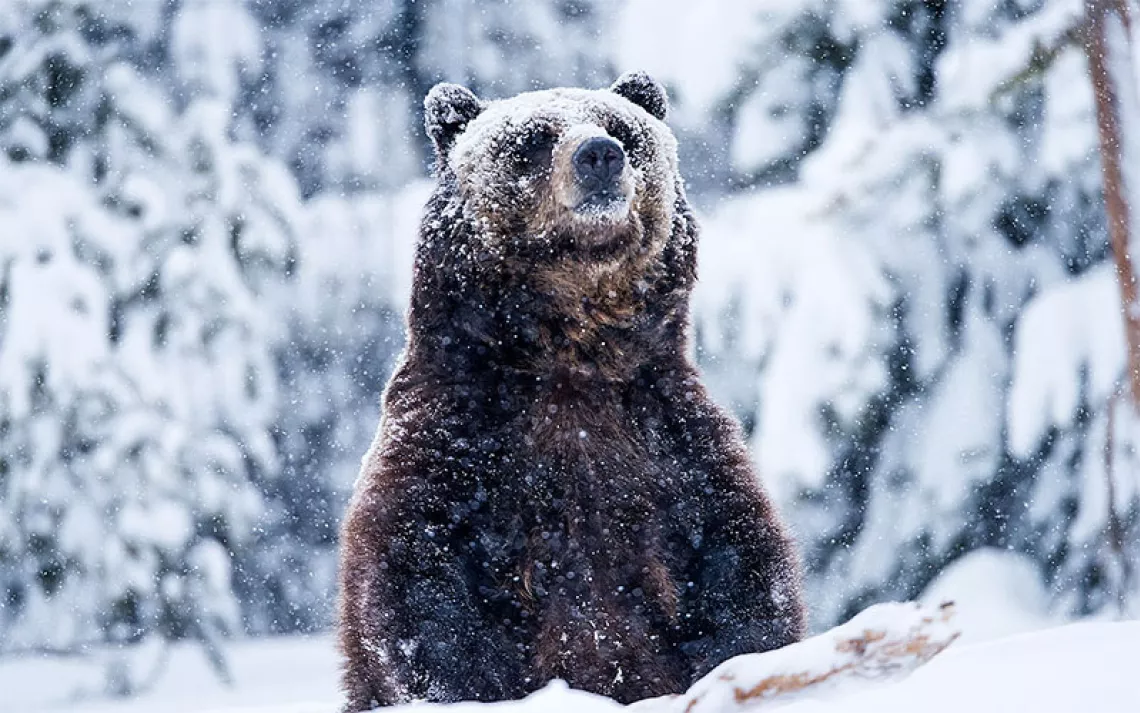Conservationists and Tequila Producers Team Up to Save Bat Species
Inside the recovery of the lesser long-nosed bat—agave pollinator extraordinaire

Photo by Tania Gonzalez
Cinco de Mayo typically celebrates all things touched by Mexican American culture, with an emphasis on traditional food and drink. This year, tequila lovers can also celebrate the lesser long-nosed bat, which is being removed from the U.S. endangered-species list. The bat is one of the great pollinators of agave—the key ingredient in tequila.
More than half of all bat species in America are threatened or endangered. As of May 18, the lesser long-nosed bat—whose habitat range includes the American Southwest and central and southern Mexico—will be the first to be removed from that list after significantly recovering in population.
“A rigorous review of the science indicates threats to the bat have been eliminated or reduced, populations are healthy and stable, and it no longer is endangered or threatened with endangerment under the ESA,” the U.S. Fish and Wildlife Service reported in a news release.
Scientists added the lesser long-nosed bat to the endangered-species list in 1988, at a time when fewer than 1,000 of them were believed to populate the entire range. According to Rodrigo Medellín, a professor of ecology and conservation at the Institute of Ecology at the National Autonomous University of Mexico, the bats had long been susceptible to human acts of vandalism, perpetrated in the caves and mines where they tend to roost. Medellín says this can partially be attributed to public misconception about bats; i.e., their reputations as violent blood-suckers. “They would be gassed out of caves, or dynamite was used,” Medellín says. “Bats would be burned, or people would seal up caves. Just because they had a negative public image.”
The lesser long-nosed bat typically weighs between four to six ounces, spends its summers in Arizona and New Mexico, and migrates south into central and southern Mexico for the winter. During migration, it follows a “nectar trail”—it's one of only three nectar-feeding bats in the United States. The bat’s main source of fuel is nectar from flowering plants such as blue agave and saguaro cacti.

Photo courtesy of Marco Tschapka
The plant-bat relationship between the lesser long-nosed and blue agave is crucial to both species. Medellín, known in his field as the “Bat Man,” is a key player in the success of the lesser long-nosed bat. Throughout the past decade, he’s frequently approached tequila producers to discuss the importance of letting the agave plant fully flower so that bats can gather the nectar they need to help pollinate the species. Most agave farmers harvest agave before its long, flowering stalk appears. It takes six or seven years of growth for agave plants to reach sexual maturity and flower. Plus, agave accumulates the most sugar—a trait attractive to tequila-makers—right before flowering.
However, that mode of harvesting not only negatively affects the bats, it hurts overall agave production. If agaves are only produced asexually, as were most of Mexico’s agave crops before Medellín intervened, they would make exact clones of their own genes, thus yielding entire crops of genetically identical agave. If a given crop couldn’t resist a disease or pest, it would be wiped out in its entirety, and for several years.
“They were losing genetic diversity every year,” says Medellín. “It was important to invest in allowing bats to feed [in order] to spread genes.”
After a few agave producers lost their entire crops and had to replant, Medellín says, they started paying heed to the notion of “bat-friendly agave.” Bat-friendly agave is allowed to keep growing for a longer period of time before harvest. The flowers that result create an ideal meal for the lesser long-nosed bat, and a surefire way for the plant to reproduce. Medellín says that under stable conditions, one hectare of agave—approximately two football fields’ worth—can feed around 100 bats per night.

Rodrigo Medellin | Photo courtesy of Amy Cooper
Now, based on Medellín's persuasive arguments, many among Mexico’s agave farmers set aside at least 5 percent of their crop for flowering agave. As a result, as well as thanks to widespread public education efforts, the Mexican government was able to delist the lesser long-nosed bat from its own threatened species list in 2015.
After tequila producers and bat conservationists found common ground, lesser long-nosed bats resumed living their best lives, and agave plants became heartier in the long run. Also, many more joined in on the mission to protect the bats—such as bartenders seeking to serve bat-friendly tequila and Arizonan citizen scientists.
For instance, some Tucson residents have over the past decade worked with the USFWS to help monitor lesser long-nosed bats in the area by setting up hummingbird feeders filled with bat-attracting sugar water. Biologists also set up nearby mist nets to temporarily catch bats. Whenever site bat detectors went off, a biologist would untangle, weigh, measure, and finally release the bat back into the wild. The data they collected shed new insights into the lives of the Arizonan lesser long-nosed bat population and led to the discovery of new roost site in the area.
According to the USFWS, there are now an estimated 200,000 bats living within 75 roosts across lesser long-eared bats’ range.
“It’s exciting to see bat conservation action on both sides of the border,” says Dr. Winifred Frick, chief scientist at Bat Conservation International.
Frick acknowledges that, with delisting from federal protection, funding sources dedicated to studying and monitoring the once-threatened bat would no longer be available. However, she says a monitoring plan, currently in draft form, will be set up to periodically count roost occupancy and gauge forage availability.
Overall, Frick sees it as conservation win. “I think it’s a fantastic success story.”
 The Magazine of The Sierra Club
The Magazine of The Sierra Club



